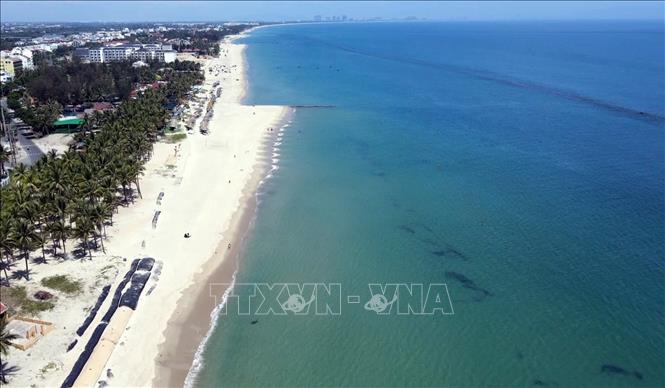
Missing database
With many years of research on coastal erosion in Vietnam, Professor, Dr. Thieu Quang Tuan (Water Resources University) stated that coastal erosion prevention needs to be carried out step by step carefully like curing a disease. Coastal erosion is only a clinical manifestation and can be caused by a variety of different causes. Therefore, it is very important to research and determine the exact cause and mechanism of erosion and then propose appropriate solutions. However, to do this well, it is necessary to monitor and supervise hydrodynamic boundary conditions as well as the status of the shore and beach regularly, long-term and systematically, but this issue is still being neglected in all localities with coastlines across the country today.
According to the plan, Da Nang city aims to become a coastal city and a creative logistics service center of regional and international stature. Vice Chairman of Da Nang City People's Committee Le Quang Nam said that Da Nang is entering a new development phase, with the pillar being the marine economy , oriented towards the sea. However, with the developments of climate change, the complex changes of beaches are posing many challenges for the city. If the city wants to become a coastal city, it must comprehensively and effectively manage the coastal area; in which, there must be monitoring tools; however, this is currently a lack and weakness of the city, limiting policy planning.
“Currently, there are many technical solutions, but choosing the right and sustainable solution for Da Nang is another story. Hard intervention solutions will of course affect other areas to some extent, while soft solutions will choose the right technology to ensure the city’s investment capacity. That is the problem that the city wants scientists to support research and consultation for the locality,” Mr. Le Quang Nam shared.
Quang Ngai province also faces many difficulties in investigating and assessing the evolution of sand and mud, the impact of dredging and sand and gravel exploitation in estuaries and hydrological and oceanographic factors leading to coastal erosion due to the requirement of deep expertise and the lack of specialized monitoring equipment stations for regular monitoring to create a database for research solutions.
Vice Chairman of Quang Ngai Provincial People's Committee, Mr. Tran Phuoc Hien said that in addition to investing in emergency repair works to promptly ensure the safety of people's lives and property and the State, the locality proposed that the Ministry of Agriculture and Environment propose to the Government to consider and promulgate regulations on management, exploitation and use of anti-erosion embankment infrastructure to protect river banks and coastlines so that the locality has a basis for implementation.
At the same time, support the province in research activities, application of science and technology to serve landslide prevention and control; invest in installing specialized regular monitoring stations, build a database on landslides, coastal developments, accelerate research on construction materials to move towards not using sand for landfill...
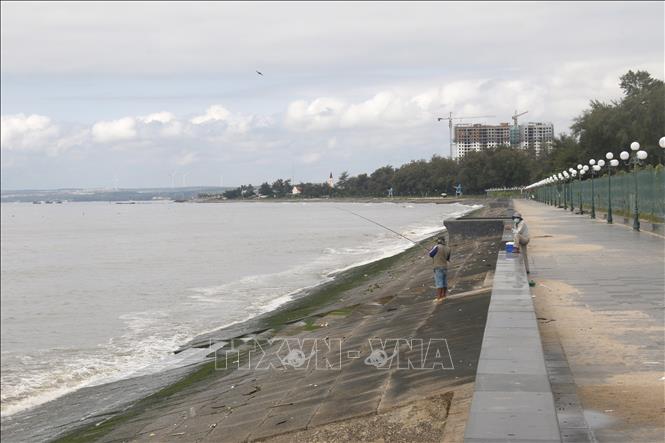
Professor, Dr. Le Manh Hung (Southern Institute of Water Resources) commented that, in general, the coastal protection projects in Lam Dong province that have been built in recent years have had a direct effect on protecting the shore. However, these projects have changed the dynamic regime of the coastal area, more or less disrupting the natural morphology of the coastal area. This has led to uncontrolled erosion and sedimentation in the adjacent areas, clearly shown by the fact that the locality has tried very hard and invested a lot of resources, but the erosion has not decreased but on the contrary, has increased in both quantity and scale.
According to Mr. Nguyen Hong Hai, Vice Chairman of Lam Dong Provincial People's Committee, the province hopes that experts, leading scientists, representatives of universities, research institutes, etc. will find suitable solutions for coastal protection works based on in-depth research. Through this, the provincial leaders will have more useful information as a basis for directing and operating the response to coastal erosion in the coming time.
New approach from Cua Dai beach
Cua Dai beach (Da Nang city) was once honored as one of the most beautiful beaches in Asia with a long stretch of fine white sand, clear sea water reflecting the tall coconut trees and from here you can see Cu Lao Cham island at many beautiful times of the day. However, Cua Dai beach has changed suddenly, seriously eroded since 2014, the waves continuously encroached dozens of meters inland, approaching the resorts, in which some villas near the coast were destroyed by the waves.
Faced with the above situation, the local government has made efforts to deploy many immediate emergency solutions to respond such as piling, inserting sandbags, and stone cages. Later, many giant sandbags also appeared along the Cua Dai coast to reduce the destructive power of the waves hitting the mainland. Accompanying this "war", domestic and international scientists have supported the locality in researching to find the causes and mechanisms of erosion as well as advising on implementing immediate and long-term solutions to gradually stabilize the coastline.
In 2016, the project “Research on the process of coastal erosion in Hoi An and propose solutions to protect the coast in a sustainable way” funded by the French Development Agency (AFD) with 300,000 Euros along with 200,000 Euros from the locality was implemented by a group of domestic and foreign scientists, ending in 2017. This is an important milestone, creating a scientific basis for the locality to implement appropriate response projects and is bringing initial results, many beautiful beaches are gradually being restored.
The results of the research project have pointed out four causes of the erosion of Cua Dai - Hoi An coast, including: lack of sediment in the sea area; changes in waves, the probability of large waves increasing in recent years, wave direction perpendicular to the coastline in winter; longshore currents and longshore sediment transport; construction of coastal protection systems by resort owners (or even local authorities) has caused erosion in neighboring areas...
From there, the overall solution was proposed to build a breakwater about 250m from the shore and nourish the sandbank. This is a new solution, the first large-scale implementation along the central coast. On the shore, the consultants did not intervene with hard structures, including building roads on the sand surface, only pouring sand to nourish the beach and planting trees.
In 2020, from public investment capital, Da Nang city constructed and completed the first underground dike outside Cua Dai beach, 220m long, to reduce waves. This project is the first test step for the fundamental solution to sustainably protect Cua Dai beach, which has been applied to date. In the 2021-2022 period, the underground dike, which is more than 1.7km long, will continue to be completed, and in the 2023-2024 period, the underground dike will be extended by another 550m.
Since the beginning of 2025, the project "Anti-erosion and sustainable protection of Hoi An coast" with a total investment of 42 million Euros, equivalent to more than 982 billion VND, funded by the French Development Agency (AFD) and the European Union (EU) is being implemented with a length of nearly 3.4 km; in which the underground wave-reducing dyke with a total length of more than 2 km has been interrupted.
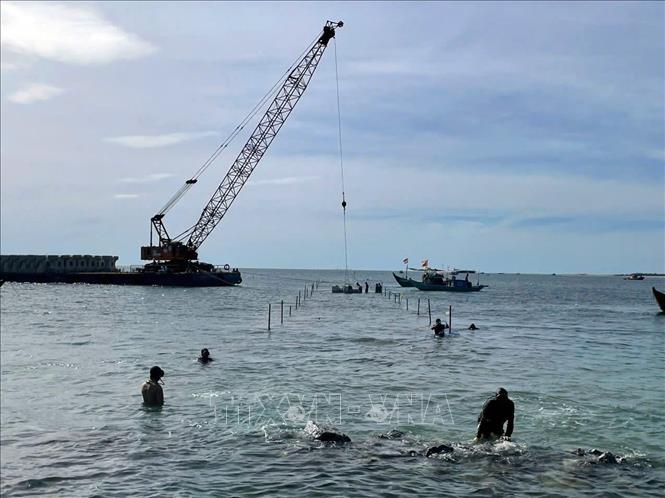
Mr. Le Tu Khanh, Head of Project Management Department II (Quang Nam Construction Investment Project Management Board, Da Nang City) said that at present, the construction units have completed 50% of the underground dike volume. Unlike previous projects that built continuous underground dikes, this project's underground dikes are designed intermittently to facilitate the entry and exit of ships, as well as the natural sand deposition process towards the shore.
The beach nourishment solution consists of two parts: The shallow beach has an elevation of 2m and a width of about 40m; The bathing beach is a submerged slope extending from the outer edge of the shallow beach to the underground dike. With the designed beach slope, it ensures a swimming space even when the sea level is low at the time of low tide. It is expected that when the project is completed at the end of 2026, it will create a complete whole to sustainably protect the Cua Dai coast.
Because the Cua Dai coastal area is a buffer zone of the Cu Lao Cham World Biosphere Reserve, the construction of an underground dike to reduce offshore waves has been carefully assessed by domestic and international experts for its environmental impacts during the construction and operation of the dike line. The process of beach nourishment and beach regeneration requires a large amount of sand pumped ashore. The advantage is that the Cua Dai estuary has a newly formed floating island and is expected to provide about 1.4 million m3 of sand for this process.
According to Mr. Le Dinh Son, Project Manager (Quang Nam Construction Investment Project Management Board, Da Nang City), the special point in the sand feeding grounds of the project is the 960m long C7 beach located in Hoi An Tay ward, which is called the "sacrificial" feeding ground. The outside of C7 beach is not designed as a wave-breaking underground dike, only using sand pumping to feed the beach on the shore and it takes time to recover. According to calculations by foreign experts, in the beginning, C7 feeding ground will continue to erode and must continuously pump sand, but when it reaches a certain point, the waves will automatically deposit sand back to create a beach here.
According to many experts, with thorough research, finding the causes and mechanisms of beach erosion, before implementing a comprehensive cluster of projects to handle the erosion of Cua Dai beach, it is bringing clear initial results, the beaches are gradually being restored. This is a construction solution that provinces and cities in the Central region can refer to usefully in the current "war" against coastal erosion.
Source: https://baotintuc.vn/kinh-te/bao-ve-dai-lua-bo-bien-mien-trung-bai-cuoi-can-bat-dung-benh-20251011075919555.htm



![[Photo] Ho Chi Minh City is brilliant with flags and flowers on the eve of the 1st Party Congress, term 2025-2030](https://vphoto.vietnam.vn/thumb/1200x675/vietnam/resource/IMAGE/2025/10/10/1760102923219_ndo_br_thiet-ke-chua-co-ten-43-png.webp)
![[Photo] Opening of the World Cultural Festival in Hanoi](https://vphoto.vietnam.vn/thumb/1200x675/vietnam/resource/IMAGE/2025/10/10/1760113426728_ndo_br_lehoi-khaimac-jpg.webp)

![[Photo] General Secretary attends the parade to celebrate the 80th anniversary of the founding of the Korean Workers' Party](https://vphoto.vietnam.vn/thumb/1200x675/vietnam/resource/IMAGE/2025/10/11/1760150039564_vna-potal-tong-bi-thu-du-le-duyet-binh-ky-niem-80-nam-thanh-lap-dang-lao-dong-trieu-tien-8331994-jpg.webp)

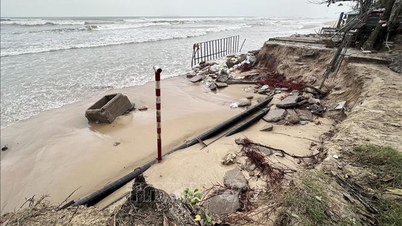
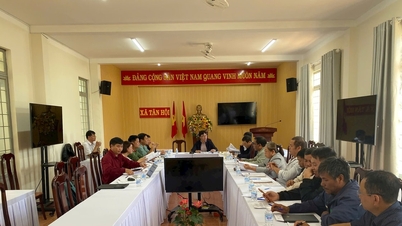
























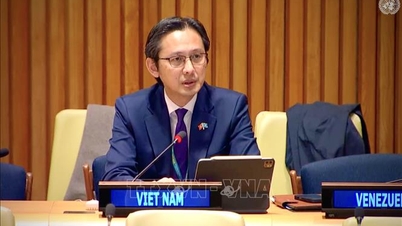
































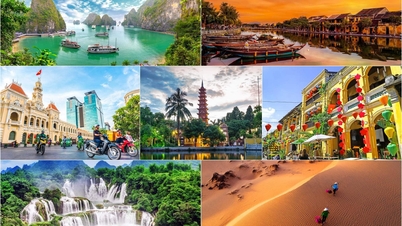




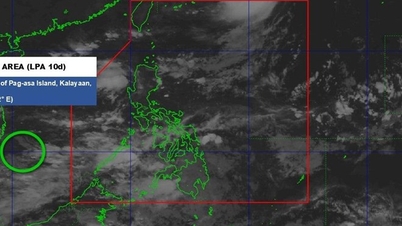









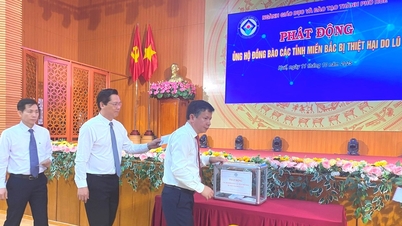



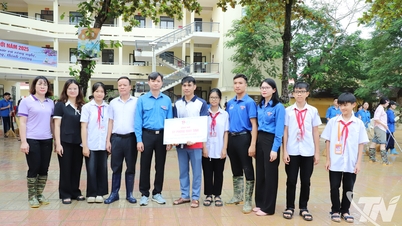



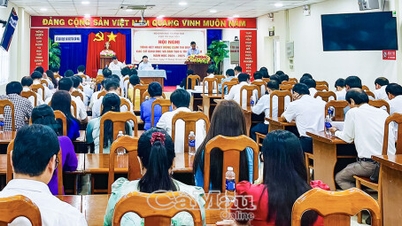

















Comment (0)